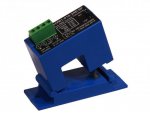dgreeley6
Member
- Location
- United States
We are trying to sense current (proxy for occupancy) of a Stryker low voltage surgical lighting system. The lighting control panel has no status output, totally encased cable from panel to light, and an incoming line voltage feed. Any ideas on HOW we could determine the light is "on" by CT or other method?
Thanks in advance.
Thanks in advance.


